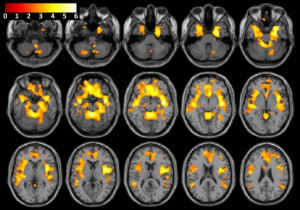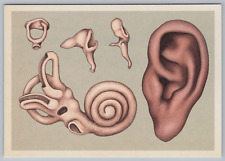
Behavioral abnormalities are traditionally thought to originate in the brain, but researchers at the Albert Einstein College of Medicine have found that inner-ear dysfunction can directly cause neurological disorders such as hyperactivity. Their intriguing study, published inScience, implicates two brain proteins that could be targets for novel interventions.
“Our study provides the first evidence that a sensory impairment, such as inner-ear dysfunction, can induce specific molecular changes in the brain that cause maladaptive behaviors traditionally considered to originate exclusively in the brain,” said study leader Jean M. Hébert (pictured).
The idea for the study arose when co-researcher Michelle W. Antoine noticed that some mice in the laboratory were unusually active – in a state of near-continual movement, chasing their tails in a circular pattern. Further investigation revealed that the mice had severe cochlear (responsible for hearing) and vestibular defects (responsible for balance) and were profoundly deaf. “We then realized that these mice provided a good opportunity to study the relationship between inner-ear dysfunction and behavior,” said Hébert.
The researchers established that the animals’ inner-ear problems were due to a mutation in a gene called Slc12a2, which mediates the transport of sodium, potassium, and chloride molecules in various tissues, including the inner ear and central nervous system. The gene is also found in humans.
To determine whether the gene mutation was linked to the animals’ hyperactivity, the researchers took healthy mice and selectively deleted Slc12a2 from either the inner ear, various parts of the brain that control movement or the entire central nervous system. “To our surprise, it was only when we deleted the gene from the inner ear that we observed increased locomotor activity,” said Hébert.
The researchers hypothesized that inner-ear defects cause abnormal functioning of the striatum, a central brain area that controls movement. Tests revealed increased levels of two proteins involved in a signaling pathway that controls the action of neurotransmitters: pERK (phosphorylated extracellular signal-regulated kinase) and pCREB (phospho-cAMP response-element binding protein), which is further down the signaling pathway from pERK. Increases in levels of the two proteins were seen only in the striatum and not in other forebrain regions.
According to the researchers, the findings suggest that hyperactivity in children with inner-ear disorders might be controllable with medications that directly or indirectly inhibit the pERK pathway in the striatum. “Our study also raises the intriguing possibility that other sensory impairments not associated with inner-ear defects could cause or contribute to psychiatric or motor disorders that are now considered exclusively of cerebral origin,” said Hébert. “This is an area that has not been well studied.”
Related:
Discuss this article in our forum
Medicos mull possible link between obesity and ADHD
Striking correlation found between infection and mood disorders
Scientists merge electronics with bio-printed ear


















Comments are closed.